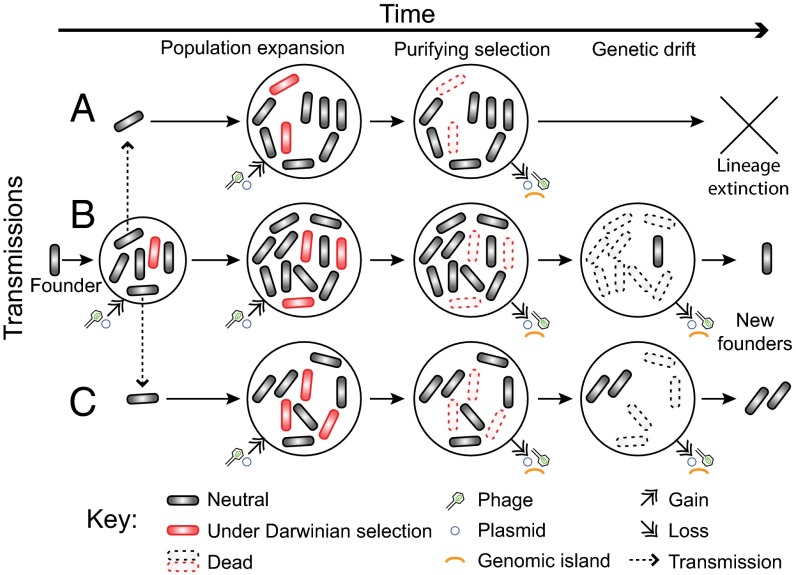Fig. 4.
Cartoon of microevolutionary dynamics in Paratyphi A and other bacterial pathogens. Population expansions and transmissions between geographic areas (A, B, and C) are accompanied by genetic changes, some of which are neutral (gray) and others of which are under Darwinian selection (red). These genetic changes include various categories of mutations in the core and accessory genome, as well as the acquisition of bacteriophages and plasmids. Most deleterious genetic changes, including those under Darwinian selection, are removed by purifying selection (indicated as “Dead”). Others, including neutral changes, are lost because of genetic drift (also Dead), which is particularly effective during intermittent, random reductions in population size. The population size is particularly low during transmissions, which can even result in sequential founder effects due to bottlenecks.

